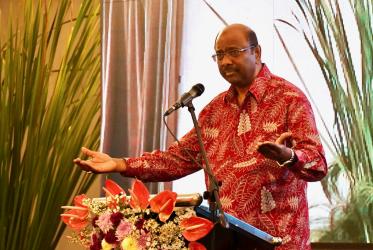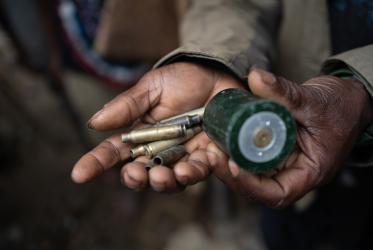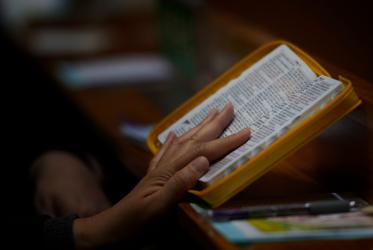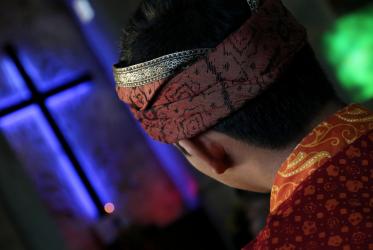Evangelische Kirche auf Kalimantan
(Gereja Kalimantan Evangelis, GKE)
From 1835 to 1925 the Rhenish Missionary Society worked on the island of Borneo among the Dayak people. Progress was slow because the Dayaks held tenaciously to their traditional beliefs and practices, and also because of Muslim opposition. By 1925 there were only 5,400 Christians. From 1925-35 the Basel Mission took over but faced also many difficulties. The church became autonomous under the name Dayak Evangelical Church. It endured great hardships under the Japanese occupation. In 1950 the church adopted the name Kalimantan Evangelical Church, to express the fact that the entire island, where other tribes live besides the Dayaks, is the church's mission field (Kalimantan is the name of the part of the island belonging to Indonesia).
There are many ethnic groups in Kalimantan: Dayak, Banjar, Bugis, Java, Madura, Bali, Sunda, thus forming a pluralistic society of different cultures, customs and languages. Though there has been intermarriage and some assimilation of culture, tensions and conflicts remain. The church is aware of the fact that there are positive values in the customs and traditions of the ethnic groups of Kalimantan and that they relate in different ways to the Christian faith. The Muslim majority of Kalimantan is conservative and strongly influenced by local traditions and culture. In some areas migrants greatly outnumber the indigenous population. An example is the district of Pangkoh in Central Kalimantan. In 1980, it had a population of 6,000, mostly comprising people from the Dayak tribe. Within a few years the population increased to 56,000 due to migration. In 2000 communal violence erupted in Central Kalimantan, where the majority of the Christians live. It was not a Christian-Muslim conflict but ethnic violence marked by a resurgence of traditional belief in magic powers which resulted in killings. The fact that this could happen remains a problem for the church. The answer lies not so much with Christian-Muslim dialogue but rather in promoting activities of common interest for the different ethnic groups.
The GKE is spread over an area of 230,000 square miles and divided into four provinces, 64 parishes (or regions) and seven parishes in formation. A great problem is the lack of transportation for the pastors, teachers, and other church workers. The church participates in education and development through agricultural and technical schools (e.g. carpentry), rural development centres, health services in rural areas, several elementary schools and high schools, a university and some boarding homes. Pastors are trained at the theological seminary in Banjarmasin.




